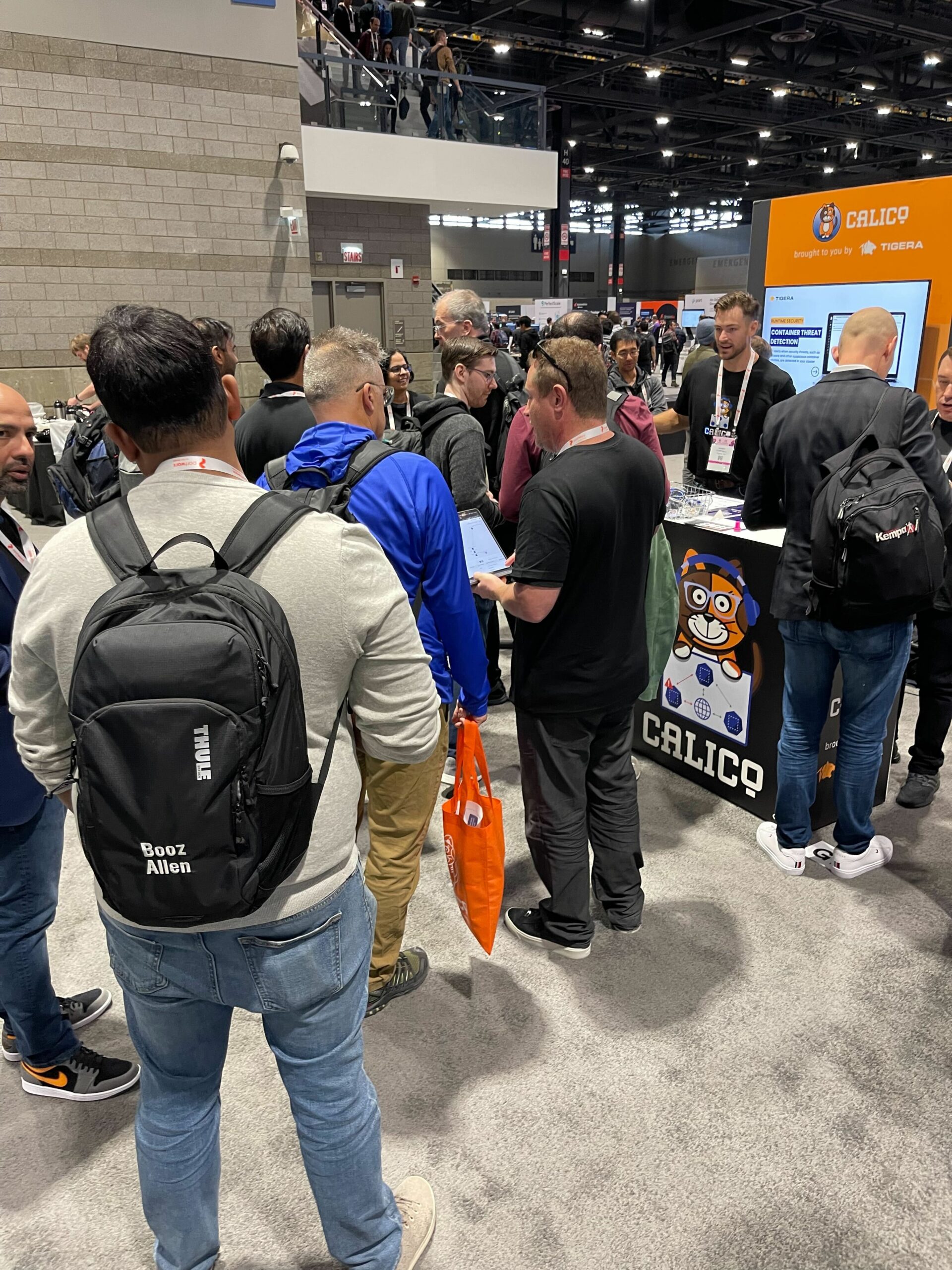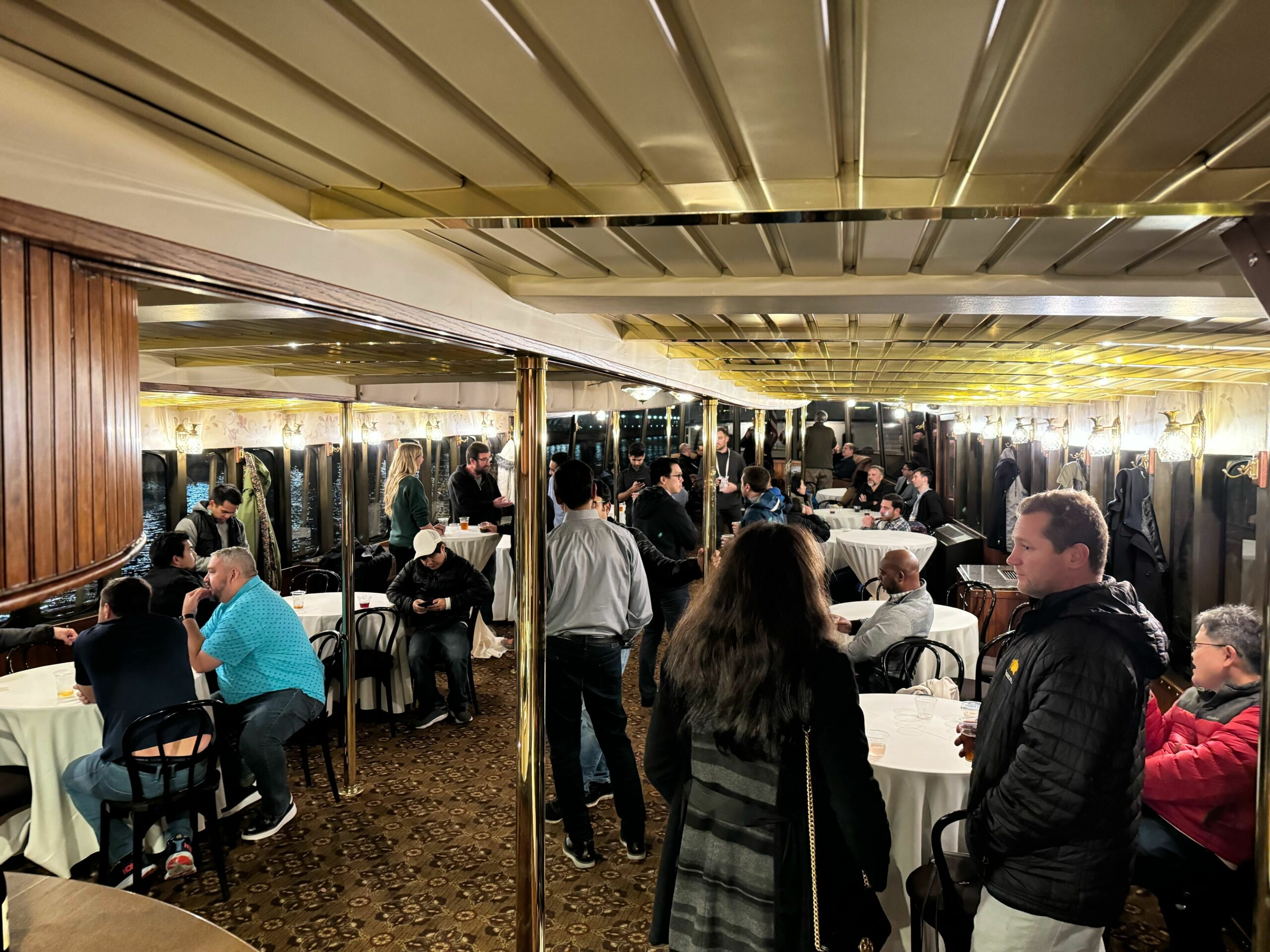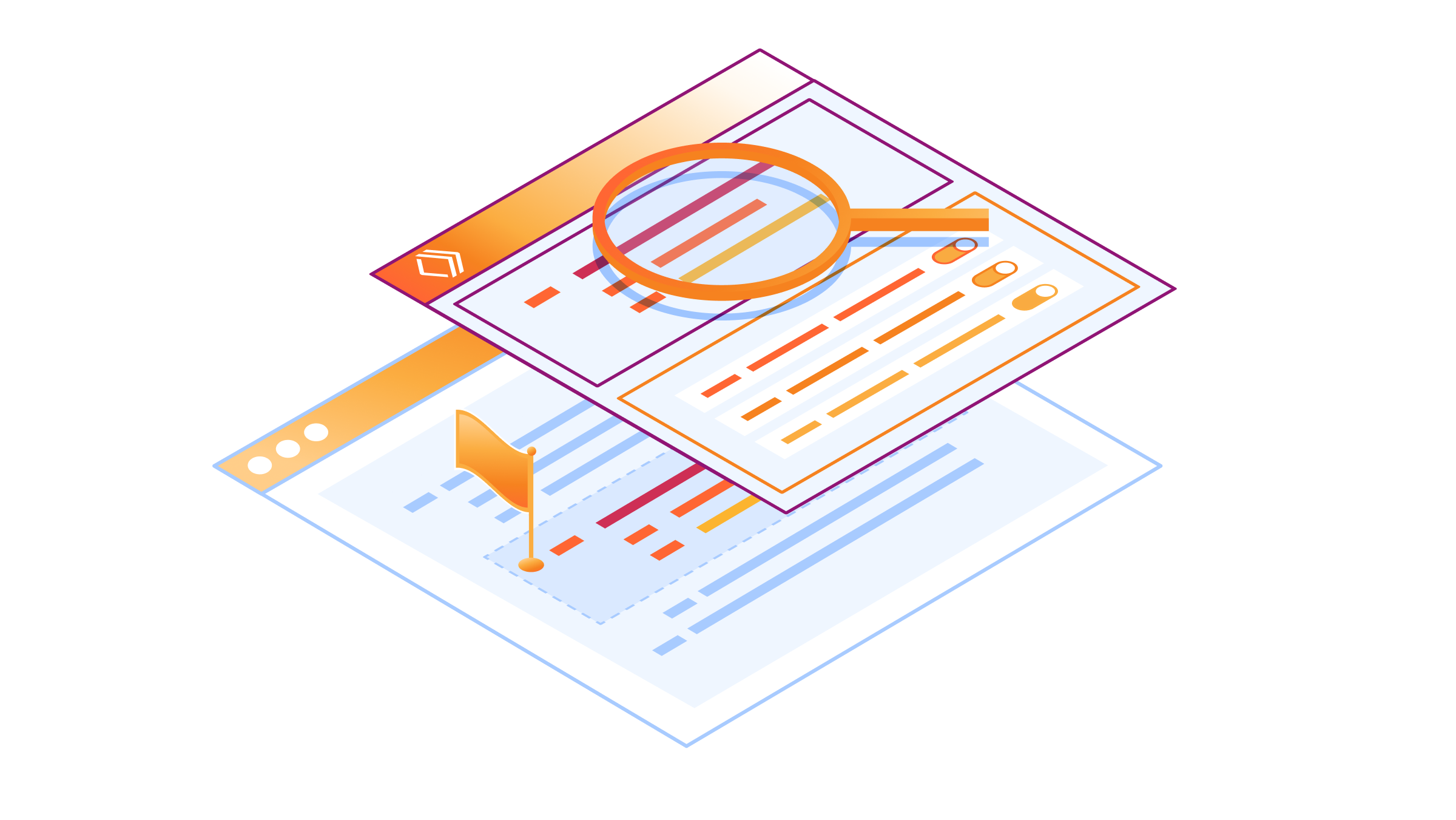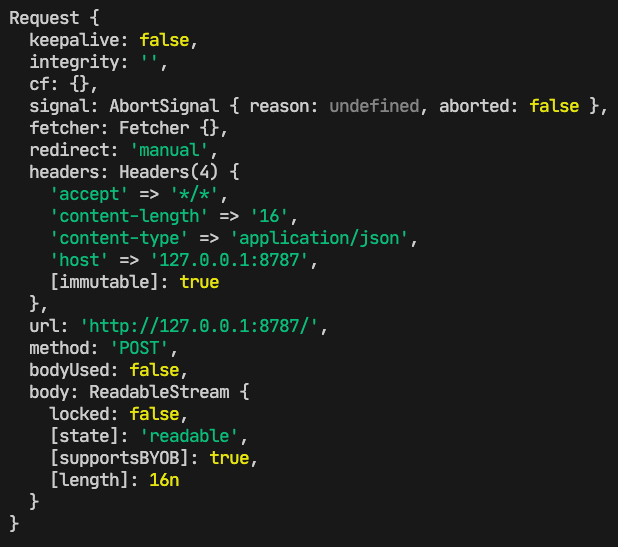Azure Application Gateway Log Analytics
https://codingpackets.com/blog/azure-application-gateway-log-analytics
Azure Firewall Log Analytics
https://codingpackets.com/blog/azure-firewall-log-analytics
Recap: KubeCon + CloudNativeCon NA 2023
Thanks to everyone who joined us in Chicago this month at KubeCon + CloudNativeCon NA 2023. We had a chance to have many meaningful conversations about Kubernetes and container security, the latest in the open source ecosystem, and of course—Calico! Here are some highlights from the conference.
Calico at KubeCon
We had a ton of visitors at our booth this year and were happy to catch up with old friends as well as meet new ones. Tech problems for business needs, such as how to provide fixed IPs to workloads for communication outside of the Kubernetes cluster instead of architectural debates about the underlying dataplane, was a popular topic of discussion. Another was runtime security at the workload level (default-deny/zero trust). The issue of visibility into workload communication at scale overlaid with effective security policies also came up often. We were all too happy to show how Calico can help!

Cruise Party
Those who joined us for our private cruise party enjoyed a guided architecture tour of the spectacular Chicago lakefront. The evening went swimmingly and offered our guests a chance to unwind and network while enjoying great food and an open bar, against a backdrop of glittering skyscrapers.


2023 Continue reading
Cyber Week: Analyzing Internet traffic and e-commerce trends

Throughout the year, special events lead to changes in Internet traffic. We observed this with Thanksgiving in the US last week, where traffic dipped, and during periods like Black Friday (November 24, 2023) and Cyber Monday (November 27, 2023), where traffic spiked.
But how significant are these Cyber Week days on the Internet? Is it a global phenomenon? Does e-commerce interest peak on Black Friday or Cyber Monday, and are attacks increasing during this time? These questions are important to retailers and stakeholders around the world. At Cloudflare, we manage substantial traffic for our customers, which gives us a unique vantage from which to analyze traffic and attack patterns across large swaths of the Internet.
As we'll explore next, we observed varying trends. From a global perspective, there was a clear Internet traffic winner: Cyber Monday was the highest overall traffic day of 2023 (as it was for 2022), followed by Black Friday, and then Monday, November 21 from the same week. But zooming in, this pattern didn’t hold in some countries.
For this analysis, we examined anonymized samples of HTTP requests crossing our network, as well as DNS queries. Cloudflare's global data shows that peak request traffic occurred on Continue reading
HW016: How mDNS Can Kill Wi-Fi Performance And What To Do About It
If you’re not paying attention to mDNS traffic, it might be hurting your Wi-Fi performance. Bryan Ward shares his research looking at the mDNS protocol on a higher ed network and its dramatic impact on Wi-Fi airtime. Bryan shares his experience of identifying and resolving network issues related to mDNS traffic and client isolation. He... Read more »HS059: Cognitive Load and Platforms
Our conversation begins with an exploration of the concept of cognitive load in relation to platforms. David, despite being an IT professional and not a psychiatrist, brought an intriguing perspective to the table. He emphasized how platforms, such as VMware, Kubernetes, and Cloud Foundry, are designed to remove effort from users, making it easier for... Read more »HS059 Cognitive Load and Platforms
Special guest David Stengel shares his unique perspective on the cognitive load of platforms in organizations, and the challenges of getting things done even when using tools that abstract workload.
The post HS059 Cognitive Load and Platforms appeared first on Packet Pushers.
HW016: How mDNS Can Kill Wi-Fi Performance And What To Do About It
If you’re not paying attention to mDNS traffic, it might be hurting your Wi-Fi performance in a big way. Bryan Ward shares his research looking at the mDNS protocol on a higher ed network and its dramatic impact on Wi-Fi airtime.
The post HW016: How mDNS Can Kill Wi-Fi Performance And What To Do About It appeared first on Packet Pushers.
Understanding Cisco’s Generative Artificial Intelligence Strategy
Cisco’s approach to AI includes a processor designed for AI's networking demands, leveraging Cisco’s AI capabilities to bolster security and observability, and more.How to Speed Cyberattack Discovery
Who’s that suspicious network visitor? Is the guest explainable or a potential threat? Cyberattack discovery will help you find the answer.Better debugging for Cloudflare Workers, now with breakpoints

As developers, we’ve all experienced times when our code doesn’t work like we expect it to. Whatever the root cause is, being able to quickly dive in, diagnose the problem, and ship a fix is invaluable.
If you’re developing with Cloudflare Workers, we provide many tools to help you debug your applications; from your local environment all the way into production. This additional insight helps save you time and resources and provides visibility into how your application actually works — which can help you optimize and refactor code even before it goes live.
In this post, we’ll explore some of the tools we currently offer, and do a deep dive into one specific area — breakpoint debugging — looking at not only how to use it, but how we recently implemented it in our runtime, workerd.
Available Debugging Tools
Logs
console.log. It might be the simplest tool for a developer to debug, but don’t underestimate it. Built into the Cloudflare runtime is node-like logging, which provides detailed, color-coded logs. Locally, you can view these logs in a terminal window, and they will look like this:

Outside local development, once your Worker is deployed, console.log statements are visible via Continue reading
DNS at IETF 118
The IETF met in Prague in the first week of November 2023, and, as usual there was a flurry of activity in the DNS-related Working groups. Here's a roundup of those DNS topics I found to be of interest at that meeting.Steve Bray: Why I joined Cloudflare

I am excited to announce that I joined Cloudflare last month as Head of Australia & New Zealand, to continue to build on Cloudflare’s success in the region through extending our valuable relationships with our customers and partners.
My journey to Cloudflare
I’ve been fortunate over my 25-year career in the IT industry to have worked for some of the most recognised and innovative organisations such as Oracle, Salesforce, and Zendesk. It’s been exciting to be inside these businesses as they’ve taken new ideas about how software can be developed and delivered to solve real world problems for any organisation’s customers. I’ve learned a lot by being a part of the industry, but probably more importantly, I’ve learned the most from the smart, experienced, diverse groups of talented people that I’ve had the pleasure to work with in ANZ and across Asia Pacific. I have always been interested in the problems that organisations are trying to solve through technology — for example, responding to strategic challenges, reducing cost, improving revenue, reducing risk — and joining Cloudflare is an opportunity to stay focussed on addressing those critical issues with our customers and partners using Cloudflare’s innovative solutions.
So why Cloudflare?
Cloudflare’s Continue reading
NB457: Broadcom, VMware Tie The Knot; Nvidia SuperNICs Target AI Ethernet Acceleration
Broadcom clears the last hurdle to close its $69 billion purchase of VMware, but what comes next? Nvidia debuts a SuperNIC to accelerate Ethernet for AI workloads, China and India advance their satellite Internet efforts, and Nvidia puts up jaw-dropping results in its latest quarterly earnings.
The post NB457: Broadcom, VMware Tie The Knot; Nvidia SuperNICs Target AI Ethernet Acceleration appeared first on Packet Pushers.
NB457: Broadcom, VMware Tie The Knot; Nvidia SuperNICs Target AI Ethernet Acceleration
Now that Broadcom’s $69 billion VMware acquisition is complete, will Broadcom invest more in VMware to compete in multi-cloud or settle for profitable revenue collection from existing customers? Nvidia debuts a SuperNIC designed to accelerate Ethernet to support AI workloads and announces partnerships with server makers to bundle its NIC in an AI Ethernet stack.... Read more »Tech Bytes: Nokia Deepfield Brings Fresh Analytics, New Gear To The DDoS Fight (Sponsored)
Today on Tech Bytes, sponsored by Nokia, we’ll talk about what’s brewing on the DDoS front and how Nokia’s Deepfield is bringing new analytics techniques to the fight.
The post Tech Bytes: Nokia Deepfield Brings Fresh Analytics, New Gear To The DDoS Fight (Sponsored) appeared first on Packet Pushers.
Tech Bytes: Nokia Deepfield Brings Fresh Analytics, New Gear To The DDoS Fight (Sponsored)
Distributed Denial of Service attacks, or DDoS, have plagued the Internet for decades. And attackers are finding new ways to take advantage of higher levels of bandwidth and the ever-growing number of network-connected devices. Today on Tech Bytes, sponsored by Nokia, we’ll talk about what’s brewing on the DDoS front and how Nokia’s Deepfield is... Read more »Cloudflare named a leader in Forrester Edge Development Platforms Wave, Q4 2023
This post is also available in Español, Deutsch, Português, 日本語, 한국어.
Forrester has recognized Cloudflare as a leader in The Forrester Wave™: Edge Development Platforms, Q4 2023 with the top score in the current offering category.
According to the report by Principal Analyst, Devin Dickerson, “Cloudflare’s edge development platform provides the building blocks enterprises need to create full stack distributed applications and enables developers to take advantage of a globally distributed network of compute, storage and programmable security without being experts on CAP theorem.“
Over one million developers are building applications using the Developer Platform products including Workers, Pages, R2, KV, Queues, Durable Objects, D1, Stream, Images, and more. Developers can easily deploy highly distributed, full-stack applications using Cloudflare’s full suite of compute, storage, and developer services.
Workers make Cloudflare’s network programmable
“ A key strength of the platform is the interoperability with Cloudflare’s programmable global CDN combined with a deployment model that leverages intelligent workload placement.”
– The Forrester Wave™: Edge Development Platforms, Q4 2023
Workers run across Cloudflare’s global network, provide APIs to read from and write directly to the local cache, Continue reading
Asking The Right Question About The Wireless Future

It wasn’t that long ago that I wrote a piece about how Wi-Fi 6E isn’t going to move the needle very much in terms of connectivity. I stand by my convictions that the technology is just too new and doesn’t provide a great impetus to force users to upgrade or augment systems that are already deployed. Thankfully, someone at the recent Mobility Field Day 10 went and did a great job of summarizing some of my objections in a much simpler way. Thanks to Nick Swiatecki for this amazing presentation:
He captured so many of my hesitations as he discussed the future of wireless connectivity. And he managed to expand on them perfectly!
New Isn’t Automatically Better
Any time I see someone telling me that Wi-Fi 7 is right around the corner and that we need to see what it brings I can’t help but laugh. There may be devices that have support for it right now, but as Nick points out in the above video, that’s only one part of the puzzle. We still have to wait for the clients and the regulatory bodies to catch up to the infrastructure technology. Could you imagine if we did the same Continue reading
Can a Router Use the Default Route to Reach BGP Next Hops?
TL&DR: Yes.
Starting with RFC 4271, Route Resolvability Condition:
- A route without an outgoing interface is resolvable if its next hop is resolvable without recursively using the same route.
- A route with an outgoing interface is always considered resolvable.
- BGP routes can be resolved through routes with just a next hop or an outgoing interface.